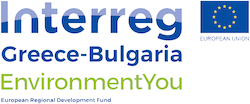Our quality of life, our health and our jobs depend on the state of our environment. The way and pace at which we use up natural resources today can have a negative impact on our well-being, as well as on nature's ability to supply us with what we need. Therefore, we need to change the way we produce, consume and live - we need to make our economy green.
The term 'green economy' was originally coined in a report prepared for the UK government in 1989 by a group of leading environmentalists, entitled "Blueprint for a Green Economy"/"A blueprint for a green economy" (D. Pearce, A. Markandya and E. Barbier). The document is intended to advise public authorities on whether there is a consensus definition of the term 'sustainable development', how it contributes to economic well-being and whether it can be taken into account in the formulation of projects and policies.
In 2008, the term 'green economy' was reintroduced in the context of discussions on policy responses to a host of global problems. Given the financial crisis and concerns about a global recession, the United Nations Environment Programme (UNEP) supports the idea of so-called 'green stimulus packages' and identifies specific areas where large-scale public investment could promote the development of the green economy. UNEP inspired several governments to introduce significant green stimulus packages as part of their economic recovery efforts.
Various international organisations focus their attention on particular elements of the green economy. Their definitions reflect the fulfilment of the following three objectives:
- Improving efficiency in the use of resources
- Ensuring ecosystem resilience by protecting the environment and ecosystem service flows
- Enhancing social justice by improving people's well-being and having an equitable burden sharing in society
Organisation for Economic Co-operation and Development believes that green growth/green economy means stimulating economic growth and development while ensuring that natural assets continue to provide the resources and environmental services on which our well-being depends. To do this, investment and innovation must be stimulated, which will lead to sustainable growth and open up new economic opportunities. It is argued that greening the growth path of an economy depends on the policy and institutional environment, the level of development, the resources available and the specific environmental pressure points. This means that there is no one-size-fits-all solution. However, innovation has a key role to play as it can reduce the physical depletion of natural capital. Existing production technologies and consumer behaviour can be expected to lead to positive outcomes up to a point, after which natural capital depletion has a negative impact on overall growth. It is innovation that helps to expand this frontier.
In conclusion, the green economy is a means to achieve the Sustainable Development Goals by:
- Improving human well-being, providing better healthcare, education and job security
- Enhancing social justice, reducing poverty and ensuring conditions for social, economic and financial inclusion
- Reducing risk to the environment, taking into account climate change, limiting the release of hazardous chemicals and pollutants, improving waste management
- Reducing the environmental deficit by providing access to fresh water, natural resources and improving soil fertility
The green economy model seeks to achieve balanced portfolio of investments in social, human, natural and financial capital, which also meets the objectives of the concept of sustainable development. This logically leads to a recognition of the importance of market mechanisms, but they are not seen as the only or best solution to all problems. The productive power of natural capital is taken into account and exploited, especially in developing solutions for those segments of the population whose livelihoods depend largely on access to and quality of natural capital and who are most often the poorest segment of society.

